As National Poetry Month continues, The Walking Classroom offers even more possibilities for exploring poets and poetry topics with the help of some literary links!
How about Some Humor?
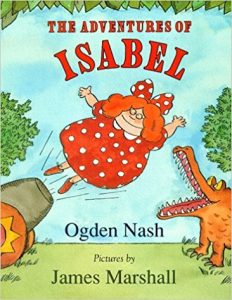 Interject some laughs into your study of poetry, and read some verse by Ogden Nash (4-#40, Complete-#36). Engage your crew with books built around an individual poem. Choose from The Adventures of Isabel (illustrated by James Marshall) or The Tale of Custard the Dragon (illustrated by Lynn Munsinger). For a different approach, dive into Ogden Nash’s Zoo (edited by Roy Finamore and illustrated by Etienne Delessert). This collection features verses about . . . you guessed it! Animals!
Interject some laughs into your study of poetry, and read some verse by Ogden Nash (4-#40, Complete-#36). Engage your crew with books built around an individual poem. Choose from The Adventures of Isabel (illustrated by James Marshall) or The Tale of Custard the Dragon (illustrated by Lynn Munsinger). For a different approach, dive into Ogden Nash’s Zoo (edited by Roy Finamore and illustrated by Etienne Delessert). This collection features verses about . . . you guessed it! Animals!
Equally entertaining are the works of Jack Prelutsky (4-#39, Complete-#38). A prolific poet and perennial favorite, Prelutsky has been publishing poems for children since the 1960s! Incorporate one of these thematically based collections into your class activities.
- Behold the Bold Umbrellaphant and Other Poems (illustrated by Carin Berger)
- Good Sports: Rhymes about Running, Jumping, Throwing, and More (illustrated by Chris Raschka)
- Be Glad Your Nose Is on Your Face and Other Poems (illustrated by Brandon Dorman)
Inspired by his writing, and looking for some tips? Check out Pizza, Pigs, and Poetry: How to Write a Poem, published by Prelutsky in 2008, then put those newfound skills to practice!
All About Anthologies
You can also introduce your students to a variety of these poets’ works through anthologies. Both MoonDance Press’ “Poetry for Kids” series and Sterling Publishing’s “Poetry for Young People” series include many of these poets. And the experience goes beyond the poems themselves, as the illustrations are perfectly paired with the text!
. . . and Even More Possibilities!
Use some of The Walking Classroom’s other podcasts and dig deeper, exploring figurative language and other literary elements featuring prominently in poetry.
- Simile and Metaphor (4-#11, 5-#72, Combined-#4)
- Alliteration & Personification (5-#67, Combined-#5)
- Rhyme Scheme, Meter and Verse (4-#9, Combined-#9)
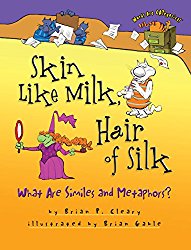 There are books a-billion (okay, that’s an exaggeration!) full of figurative language like simile and metaphor. My personal favorite? Skin Like Milk, Hair of Silk: What Are Similes and Metaphors? from Brian P. Cleary’s “Words Are Categorical” series! You can also address alliteration and personification with the help of texts. Use samples from selected poems, or pick a peck of picture books to help you out!
There are books a-billion (okay, that’s an exaggeration!) full of figurative language like simile and metaphor. My personal favorite? Skin Like Milk, Hair of Silk: What Are Similes and Metaphors? from Brian P. Cleary’s “Words Are Categorical” series! You can also address alliteration and personification with the help of texts. Use samples from selected poems, or pick a peck of picture books to help you out!
When you’re finished sharing samples, challenge your students to devise their own examples! Still seeking more poetry material? Check out other literary elements and learn some additional poetry terminology too!
Some Other Suggestions . . .
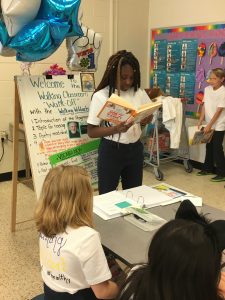 By now your students are fairly knowledgeable about poetry, and who knows? They may even be itching to put pencil to paper (or fingers to keyboard) to create some verse of their own. Focus on features like alliteration or similes and metaphors, or switch the focus to different poetic forms. Why not have them try their hand at a cinquain or a haiku? You can even entertain your students with a lesson on onomatopoeia!
By now your students are fairly knowledgeable about poetry, and who knows? They may even be itching to put pencil to paper (or fingers to keyboard) to create some verse of their own. Focus on features like alliteration or similes and metaphors, or switch the focus to different poetic forms. Why not have them try their hand at a cinquain or a haiku? You can even entertain your students with a lesson on onomatopoeia!
Need a good closing (and collaborative!) project? Compile your own classroom anthology of your students’ work! Then, schedule a poetry reading, and let them share their individual creations with an audience.
Be sure to be on the lookout for future posts in this series, where we’ll share more literary links to partner with The Walking Classroom’s podcasts!


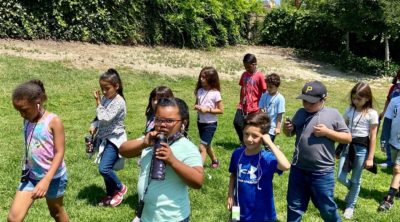
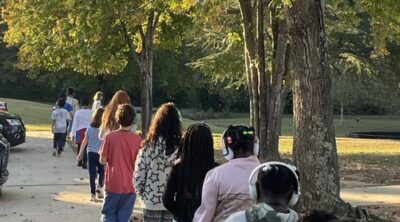
Leave a Reply